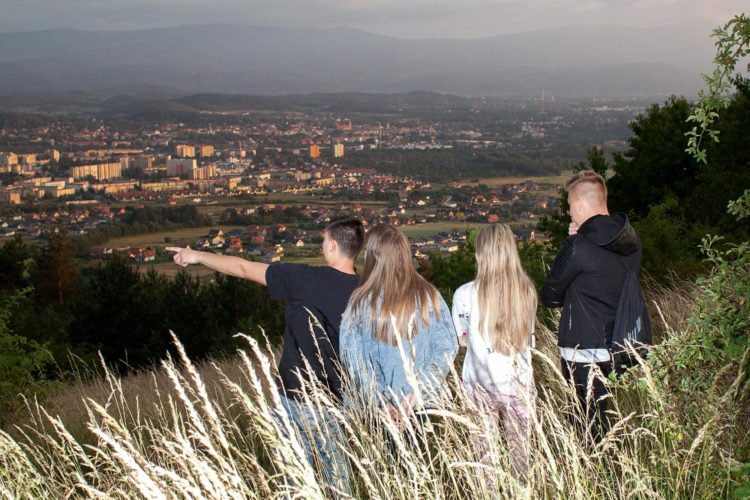The Invisibles: Poland in numbers
A look through recent statistics and developments to grasp the current climate in a country politically stuck in the past and economically looking to the future.
Modern Poland is polarised. Our timelines are littered with backwards news from the East. There are headlines about women claiming their right to abortions, waving coat hangers during the Black Protest. There are controversial judicial and media reforms challenging European values. There is illegal deforestation sanctioned by the Union. There are restrictive immigration policies, a new Holocaust law… With that in mind, Poland seems like a profoundly undemocratic country since the right-wing Law and Justice Party (PiS) has been in power. But what about the country’s other face?
The political rollercoaster that split the country in two since 2015, when the ruling PiS party got elected, cannot take away the fact that Poland is also an economic wunderkind. How this right-wing spiral and simultaneously booming economy coexist is still a bit of a mystery. The country is in the middle of a Dr. Jekyll and Mr. Hyde dilemma. Polish-born Politico Europe’s executive director, Matthew Kaminski, says the country “belongs on a shrink’s couch” when he speaks about its current contradictions. So let’s dig into some numbers and shed light on the disorder to debunk the dynamics of a country that is rather invisible among its European peers.
It’s a fact: the eastern European country is one of the EU’s fastest growing economies. So how come Poland is still seen as a poor country by most of its neighbours? Granted, once you cross one of the bridges in the Polish-German border towns, in Slubice, Gubin or Zgorzelec, you will still find cheaper cigarettes, gas and supermarkets on the other side. But nowadays, Berlin’s famous Polish cultural centre, The Club of Polish Losers, might want to reconsider their name. Because together with the Czech Republic and other eastern European economies, Poland has performed quite well in recent years. Experts call it an economic miracle. Since the political transformations after 1989, in the aftermath of the fall of the Iron Curtain, Poland has been an exemplary student of economic liberalism.
After a long period of centrally-planned state economy, industries were privatised. A mix of market-based competition and painful reforms completed the shift. As a result, the Polish economy has been growing at an average annual rate of around 4% for the past 25 years, doubling their GDP today according to the World Bank. The half a trillion dollar economy makes Poland the 8th largest economy in Europe after Germany, the UK, France, Italy, Spain, the Netherlands and Sweden. It is the 24th biggest market worldwide, according to the IMF. Poland grows quickly, about twice as fast as the neighbouring Eurozone.
What’s more, while the subprime crisis hit most European economies hard in 2008, Poland managed to sneak out of the radar. Their secret? Slow and steady growth, a manufacturing sector still able to compete with other emerging global markets and the quality of the country’s education system. But there must be another side to the growth coin if people don’t feel the “wow” effect in their wallets. A Czech journalist who worked as an undercover reporter for several months in the worst paid manual jobs in her country put it quite simply in a recent publication: If the Czech economy is thriving, why are we so poor? The roaring eastern European economies have exactly that in common: a feeling that the economic success stories of their countries don’t have an effect on the real lives of the people.
To be able to compete with, let’s say, Chinese manufacturing, Poland continues to use its cheap currency zloty. But more importantly, it keeps giving out low wages. So workers of the Volkswagen Crafter plant in Wrzezsnia, West Poland, opened in 2016, or the brand new Mercedes Benz engine factory in Jawor, situated west of Wrocław, assembling the parts for German cars, still earn only an average of around 750 euros (net) monthly, three times less than their German counterparts (2358 euro net/ month). Even if Polish people saw their average salary increase by one third in recent years, their home country ranks pretty much at the bottom of the list of European wages, just above the Baltic states (Latvia 566 euros net/ month; Lithuania 554 euros net/ month), Hungary (558 euros net/ month) and the most recent members of the European Union (Bulgaria 361 euro net/ month; Romania 427 euro net/ month and Croatia 733 euro net/ month). An average EU citizen earns around 2000 euros net/ month. Wallets in Luxembourg, the Netherlands, Denmark, Germany, Austria, the Scandinavian countries, France and Ireland are much heftier. Nonetheless, Poland’s purchasing power (PPP) got bigger and stands at 70 (100 PPP being the EU average) as of today.
Better bugger off
The Polish economy is booming and the unemployment rate of the country is one of the lowest in Europe around 3.4%, with the Czech Republic’s (2.5%) and Germany’s (equally 3.4%), while countries in Southern Europe like Greece, Italy and Spain, but as well France, haven’t recovered from the financial crisis of the late 2000s. Young people in Poland between 15 and 24 years don’t seem to face the same odds than their neighbours, they don’t have major difficulties to set foot in the current job market. During the last 10 years, youth unemployment dramatically dropped from 21% (2007) down to 5.5% (2017) in Poland. A reason for Poland’s current Prime Minister Mateusz Morawiecki to call Polish millennials, who have massively tuned their backs to the country after it joined the European Union in 2004, back home.
Poland is the country with the highest rate of migration to other EU member states.
With the EU accession, it is mainly young and educated people who have left Poland. Most of them moved to Germany, the UK, Ireland or France in search of better living conditions and decent salaries, leaving behind their families and kids. There are roughly 100.000 ‘Euro sierota’, so-called “Euro orphans”, but also a growing number of ‘Euro seniors’, whose kids have left the country to work abroad. According to the PEW research centre, 8% of the Polish birth population lived in other EU countries in 2015, which makes Poland the country with the highest rate of migration to other EU member states, a tendency that is not about to stagnate. The current Polish PM put his hopes up recently, stating that Brexit may have acted as a catalyst for returners and that there would be some “exciting opportunities waiting for them back home”. Today the brain drain tendency seems to have slowed down a little but there was no mass return during the recession years as predicted. Well, a least there are no numbers to prove it.
Jobs and bullshit
In the meantime, things got moving in Warsaw, Krakow or Gdansk and other metropoles of the country. Freshly renovated buildings, new train lines and highways pop up constantly and young, tech-savvy employees crowd the streets. As of today, the bigger agglomerations in Poland have become major hubs for business services or innovative pharmaceutical solutions with major foreign investment and global companies like UBS, HSBC or Cisco settling down in the area. Warsaw, the Polish capital, is Europe’s fastest growing city. There are three times more international students coming to Poland than 10 years ago, says GUS, the Polish National Statistics Institute, and three times more foreigners living and working in Poland in 2017 than in 2010. It’s not that foreigners are knocking down the door to get in, though, as only 1% of the Polish population of 38 millions are foreigners.
But this engine is also what Ildi calls “the cheap laboratory” of Europe. The young Hungarian and her Italian boyfriend met in Poland where both work for a big IT outsourcing company, but “in jobs that really make you feel stupid,” she says. Pia, a young Polish expat, returned to Gdansk last year, where she found a promising position in an international press agency that has settled down close to the Northern Polish coast city. Her daily tasks included “mechanically sending push notifications”. “Honestly,” she says, “a machine could do my job.” What Ildi and Pia feel resonates with what the American economist David Graeber calls ´bullshit jobs’ in his famous 2013 essay, socially useless jobs making people – mostly white collar workers – unhappy. A study covering more than 100,000 workers from 47 countries found that close to 15% of Polish employees consider their jobs as socially useless, the highest number in the ranking.
Leave and believe
Today, along with its dynamic economy and steady European subsidies flowing in (financing nearly 60% of Poland’s public investment), the country is on a roll. The forecast for the coming years looks bright. The only threat to Polish success lies in the unstable political situation. For the first time in history, the EU has threatened to pull article 7 of its treaty that could strip Poland of its voting rights inside the Union because of controversial judicial reforms the country is about to put in place. Europe has threatened to cut down subsidies as well, if the democratic standards of the continent are violated. But for now, Warsaw has been showing Brussels the cold shoulder, backed by 45% of Polish citizens who believe the EU is a coward and consider the move “an unjustified pressure on Polish authorities”. On the other hand, the most recent CBOS poll shows that an incredible 92% of Polish people want to remain in the EU.
The general support of the European project shows something that was pretty absent in many other EU countries over the last years, dramatised with the recession: a strong belief that the kids will be alright. The millennial curse of a generation doomed to live less better than their parents is actually reversed in Poland. Those born after the 1980s are generally more satisfied in Poland (51%) than the baby boomer generation (31%). A majority of Poles think their situation has generally improved in recent years. What is still a mystery is how this can go hand in hand with a backwards nationalist policy in the long run.
Polish people are finding themselves at a crossroads. There will be four elections in the coming two years, making Poland the electoral challenge on European soil. In a few weeks from now, local elections will take place in a country whose near totality of regions are already in the hands of the opposition. Then, the European elections and general elections will follow in 2019, along with the presidential elections in 2020.
Poland doesn’t stand alone. Other European countries have recently seen a rise in populist votes with nationalist parties entering governments in several EU countries. There is a number of tangible signs that it is not economic failure nor success that can be held responsible for the support of backwards or nationalist leaning politics and parties. The trend is more general than that. In that respect, Poland is an interesting laboratory, cheap or not, of what is to come for the Old Continent. For now, Polish millennials just have to go cast their votes.






